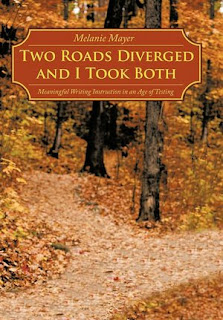And the Moral of the Story Is...
By Portia Scott, 9th and 10th grade inclusion teacher
Here is a poem, or short story if you will, about getting school work done. As far as best practices are concerned, it is something that I have used with students to teach a variety of literary elements. Additionally, teachers with whom I have shared this find it worth a smile. And the moral of the story is, with the hectic schedules of educators that include instructing, grading, meetings, parent contacts, standardized tests, scaffolding, differentiated instruction, and a plethora of other necessary requirements, sometimes we have to remember to take a break and have a little laugh.
"Please Let Summer End"
By Portia Scott copyright 2012
I’m on the inside, yes on the inside the facts are hard to take.
For the last nine months, nine very long months, I’ve craved my summer break.
Where I sit, it’s nice and cool, not one drop of sweat on me.
But outside, where freedom reigns, other children enjoy liberty.
How did I get here, one might ask, I can now calmly speak.
But when I was first given my fate, I felt like a busted boat headed up a stinky creek.
Things begin as they usually do with all the fuss and drama.
We study math, history, science, English and how to use the comma.
My parents scream. My teachers nag. They are all overreacting.
I wish they could just chill-out and give me a break. I know what I am doing.
Assignments come, assignments go; I get most of them done.
Life really is one big bowl of cherries and I just want to have fun.
The bell has rung. The doors spring open. The students now spew out.
On the street there is a mass exodus as we embrace our familiar routes.
There’s smiling and laughing, clapping and shouting, and even the stamping of feet.
“It’s over! We made it!” someone cried. “Leave those teachers in the agony of defeat.”
Left behind is the path of studying; the streets are all ablaze.
“Cheers to us!” We toast in celebration as our juice pouches are raised.
So long, adios, sayonara, arrivederci--parting comes with no sorrow to leave 4th grade.
It is time to relax and get started with fun; our best-laid plans have been made.
Forging ahead I set my sights on the game store and the local swimming pool.
In celebration of the day’s release, friends “tweet” each other terms like, “righteous,” “gnarly” and “way cool.”
Today is a day for transition. I am reborn, revived, renewed.
I am the sultan of summertime and will now get to do what I want to do.
My morning breakfast has given me great strength. I left not one single Cheerio.
Far behind me are the books, paper, and pencils. I am ready to let the good times roll.
I am covered in sunscreen. I have my hat, my toy, and my towel.
In just a few minutes, I will be out the door. Ooooo I could really howl.
On the fresh horizon, what a beautiful sight, I see sweet shimmering bliss.
When you are 9 ½ in Texas, it doesn’t get any better than this.
All of a sudden my plans are halted; I think I might just pass out.
My eyes well up and my knees buckle. This is more than a little bad, without a doubt.
On the kitchen counter with all the mail, I see a letter from the school I attend.
The envelope is open. No one is around. So, I decide to peek in.
One B, three Cs, a D and two Fs, I thought I was too big to cry.
But as my tears splashed on the words “Summer School,” I knew I could kiss my sweet summer fun good-bye.
I’m in distress. My life is over. I’m head toward the pearly gates.
I beg and plead for just one more chance, but alas, it is too late.
Now here I sit for the next six weeks, six very long weeks as a matter of fact.
Today’s events have been horrific and traumatic. I must straighten up my act.
Believe you me, this won’t happen again. I promise I have learned my lesson.
I do not want spend an eternity in 4th grade, again with Mrs. Wesson.
Books are important; school is too. I’ve got to give it my all.
I’ve changed. I’m new. You’ll see a better me. Just you wait until next fall.
Can you find:
-alliteration
-simile
-metaphor
-onomatopoeia
-foreign words
-hyperbole
-idiom
-allusion
-foreshadowing
-flashback
-theme
-plot (exposition, rising action, climax, falling action, resolution-also called The Witch’s Hat)
Portia Scott is a 9th and 10th grade inclusion teacher at Longview High School in Longview, Texas. She has taught high school for 2 years, elementary for 1 year and taught in higher education for 4 years.




















